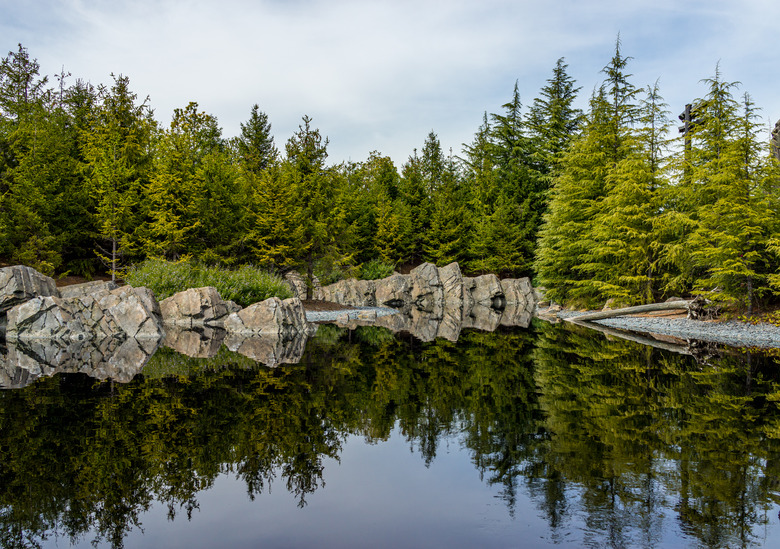How To Transplant Wild Pine Trees
We may receive a commission on purchases made from links.
Many pine trees (Pinus spp.) are towering giants, best known for their quiet presence in evergreen forests throughout the North. Although there are 35 different species of pine trees, they are all characterized by their pungent green needles and fragrant cones. As relatively hardy trees, pines can be transplanted to new sites and even moved from the wild to a location in a homeowner's yard. To successfully transplant pines, treat the uprooted seedlings gently, plant in full sun and water thoroughly after planting.
How to Transplant Wild Pine Trees
1. Choose a Full Sun Site
Choose the planting site you're going to use for the pine trees and prepare it before you transplant the pines. Preparing the site in advance will make the transition easier for the pines and encourage success. Choose a site with full sun exposure that is slightly elevated for good drainage. Many pine trees can grow upward of 50 feet tall, so make sure there's plenty of space for this growth.
2. Dig the Planting Holes
Dig holes for the pine trees you'll be planting. The holes should be roughly twice as wide as the pine trees' existing root balls and deep enough for the roots to fit comfortably in the hole without any bending or breaking. It's smart to dig a larger hole than you think you'll need; a hole that's too large can be easily filled in with dirt, whereas a hole that's too small will crowd the roots, making it difficult for the pine tree to grow.
3. Amend Poor Soils
Prepare the soil for the pine trees. Mix compost with the garden soil you dug up to obtain a 50-50 mixture, and incorporate more compost into the entire planting site; not just the planting hole. Although pines don't generally require a lot of nutrition in their soil, the added compost will nourish them as they become established and recover from the stress of transplanting.
4. Collect Wild Pine Seedlings
Dig up the wild pines. If you're transplanting multiple trees, do so one at a time, starting with this step. Trying to transplant them all at once may endanger the trees. Starting 2 feet away from the trunk of each pine tree, dig down into the soil to find the roots. Work outward and downward to find the edges of the roots if you can. Once you've found the outer reaches, dig a circle around the tree, so that you have a trench that reaches underneath the roots at their ends.
5. Loosen and Lift Root Ball
Push the shovel into the soil of the trench at an angle so that it slides under the roots of the wild pine tree. Lever the shovel up to lift the root ball out of the soil. Repeat this process at intervals around the tree, until the root ball is loose and can be lifted out. Take as much soil as possible with the pine tree during the transplant.
6. Wrap the Root Ball
Wrap the root or soil balls in moist (not soaked) towels or burlap if you're traveling a long distance with the pine trees. This will ease their transition by protecting the roots and keeping them moist during transport. If you're moving the trees a short distance, this isn't necessary.
7. Settle Seedling in Hole
Plant the pine tree in its new location. Put the roots in the hole, spread them if they're exposed and fill the hole with the excavated soil. If the roots are still encased in a soil ball, simply fill soil around that ball. When you're filling in the hole, pack the soil down with your hands to eliminate air pockets.
8. Water the Pine Thoroughly
Water the pine tree(s) generously, until the soil is moist but not wet. Maintain that level of moisture while the tree becomes established in the new site. Consistent watering at this time will help make the transplant more successful.
